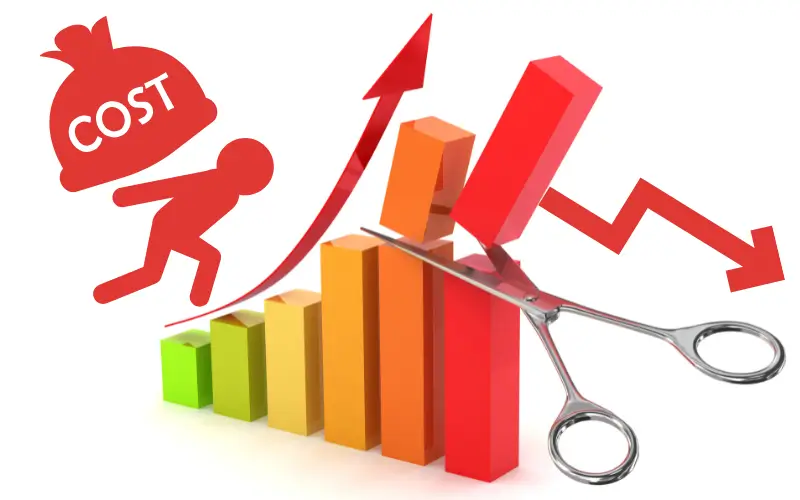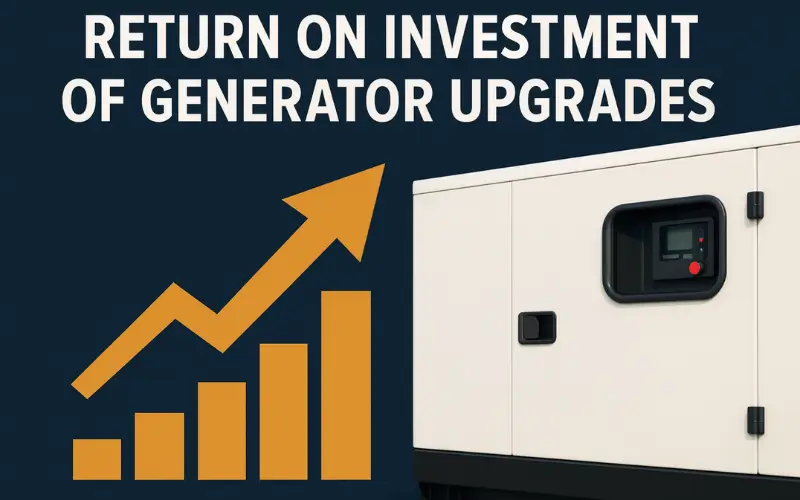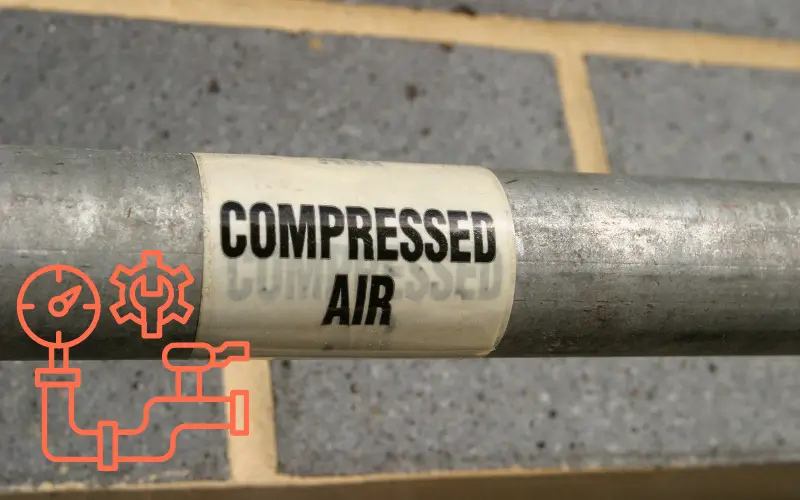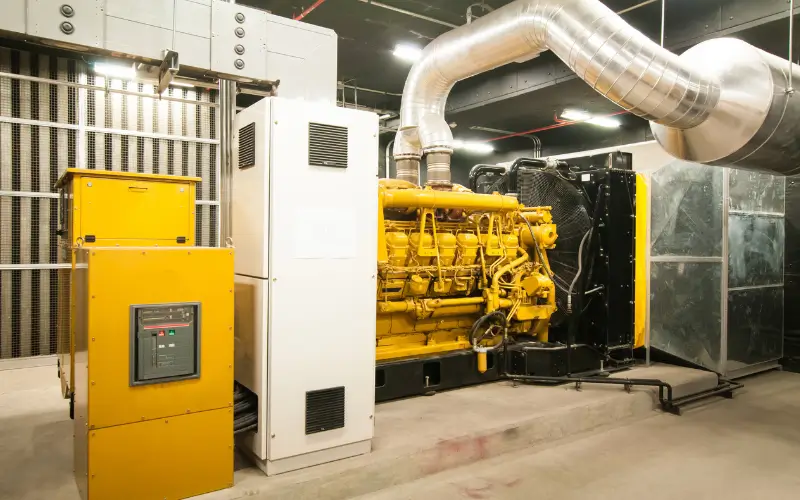In the ever-competitive world of garment manufacturing, reducing production costs without compromising quality is a constant challenge. One proven yet often overlooked strategy is conducting a comprehensive energy audit. By identifying inefficiencies and implementing targeted improvements, factories can unlock significant savings—both financially and environmentally.
This blog post presents a real-world case study of a garment factory that successfully reduced its energy costs by 30% through a strategic and well-executed energy audit. You’ll gain insights into the factory’s baseline energy consumption, the audit process, key findings, and the practical steps taken to cut waste and improve efficiency.
Whether you manage a large composite unit or a smaller knitwear workshop, this in-depth walkthrough will show how an energy audit can be a game-changing move—saving thousands in utility bills while reducing your environmental footprint.
We’ll also cover:
- The step-by-step methodology used in the audit
- Specific systems that were optimized—lighting, steam, compressors, and more
- Tools and metrics used for analysis
- Actual results and payback period
- Lessons learned and how to replicate the process in your own facility
1. Background & Context
Overview of the Factory
The featured case study focuses on a mid-sized garment manufacturing unit in Dhaka, Bangladesh, specializing in woven shirts for export. With a monthly output of over 250,000 garments, the factory operates across multiple floors, each dedicated to specific functions such as cutting, sewing, finishing, and washing.
Before the audit, the factory had a total energy consumption of approximately 78,000 kWh per month, translating to an average of 0.312 kWh per garment—a relatively high figure when benchmarked against similar facilities. Management noticed recurring increases in electricity and natural gas bills, prompting the decision to initiate an in-depth energy audit.
Energy Consumption Profile
The energy profile of the factory revealed a diverse and energy-intensive ecosystem, powered mainly by:
- Electricity from the national grid (used in lighting, sewing machines, air compressors, etc.)
- Natural gas for steam boilers used in washing and ironing
- Diesel generators as backup during power outages
Breakdown of energy use by system:
| System | % of Total Energy Use |
| Air compressors | 26% |
| Boilers (steam, ironing) | 24% |
| Lighting & HVAC | 18% |
| Motors & sewing machines | 15% |
| Misc. (fans, office, IT) | 17% |
This data was based on a combination of monthly utility bills, machine specifications, and real-time meter readings collected over a 3-month period.
Audit Goals & Scope
The primary goals of the audit were:
- Identify major sources of energy waste across departments
- Establish an energy baseline and create consumption benchmarks
- Propose actionable improvements with clear ROI timelines
- Ensure ISO 50001 compliance and prepare for future energy management certification
The audit covered five key areas:
- Lighting systems (factory floor, admin, outdoor)
- Compressed air system (distribution, leaks, pressure levels)
- Steam and boiler system (insulation, fuel use, recovery)
- Motors & machinery (idle running, oversized motors)
- Building envelope (heat gain, ventilation, air leaks)
The audit was conducted in collaboration with a third-party energy consulting firm and involved both walkthrough assessments and data-driven analysis using handheld meters, flue gas analyzers, and infrared thermography cameras.
2. Audit Methodology
A successful energy audit is built on structured analysis, accurate data, and clear benchmarking. In this case study, the audit team followed a systematic, multi-phase approach to identify energy-saving opportunities with precision.
Data Collection & Benchmarking
The audit began with a thorough collection of historical and real-time data:
- 12 months of utility bills (electricity, gas, diesel) were analyzed to establish monthly consumption patterns, detect seasonal variations, and calculate baseline energy costs.
- Equipment logs and maintenance records helped correlate energy spikes with machine usage or breakdowns.
Real-time measurements were captured using tools like:
- Clamp meters for electrical load profiling
- Ultrasonic leak detectors for compressed air
- Infrared thermometers and cameras to identify heat loss
- Flue gas analyzers for boiler combustion efficiency
These readings helped establish specific energy consumption (SEC) metrics, such as:
SEC = 0.312 kWh/garment (pre-audit benchmark)
This figure served as the starting point to measure post-implementation gains.
Process Mapping & Baseline Energy Use
To understand energy flow, the team created a process energy map, detailing where and how energy was consumed across production stages:
- Cutting & sewing – mostly electricity via motors
- Washing & drying – heavy gas and steam use
- Ironing & finishing – combination of electric presses and steam
- Compressed air – used in nearly every department (often wastefully)
Key discoveries included:
- Air compressors running at full load during non-production hours
- Over-pressurized steam lines causing energy loss
- Lighting systems in storage areas left on 24/7
The mapping exercise revealed that over 30% of energy use was non-value-adding, i.e., not directly contributing to garment production.
Use of Standards & Systems
The audit also aligned with the principles of ISO 50001 – Energy Management Systems, ensuring a structured, industry-accepted framework. Key ISO-aligned steps included:
- Establishing an Energy Review: Identifying significant energy uses (SEUs)
- Defining performance indicators: Such as kWh per garment, steam loss per meter, compressor efficiency
- Creating an Energy Action Plan: With timelines, responsible departments, and ROI forecasts
Additionally, a temporary Energy Monitoring Dashboard was created using Excel and data loggers to visualize real-time power loads and compare department-level usage—laying the groundwork for a future digital energy management system (EMS).
3. Key Findings
The audit uncovered a range of inefficiencies and avoidable energy losses across various systems in the factory. These findings helped explain the elevated energy consumption and served as the foundation for designing targeted interventions.
Electrical Energy Wastes
Lighting Inefficiencies
One of the simplest yet most costly issues identified was outdated lighting:
- T12 fluorescent tubes were still in use in over 60% of the facility
- Many areas (storerooms, stairwells) were illuminated 24/7, even when unoccupied
- Lighting layout was inefficient—over-illuminated zones increased energy waste
Estimated lighting-related energy waste: 4,800 kWh/month (~6% of total usage)
Compressed Air System Losses
The air compressor system, essential but often overlooked, revealed multiple red flags:
- Leakage rate of ~30% detected using ultrasonic leak detectors
- Pressure setpoint too high (8.5 bar vs 6.5 bar needed), consuming extra energy
- Lack of air receiver tanks, causing short cycling and energy spikes
- Compressors left ON during breaks and night shifts
Estimated savings potential from compressor optimization: 6,200 kWh/month
Power Factor Issues
The facility had a lagging power factor of 0.78, resulting in penalty charges from the utility company and inefficient electrical system performance.
Root cause: oversized motors running under partial load, poor capacitor bank sizing
Corrective potential: Improve PF to 0.95+, saving ~$420/month in penalties
Thermal & Steam System Losses
Boiler Inefficiencies
The gas-fired steam boiler, critical to washing and ironing, showed substantial inefficiency:
- Flue gas temperature exceeded 270°C, indicating poor combustion and unutilized heat
- Uninsulated steam pipelines (especially near valves and joints) caused heat loss
- Lack of condensate return system—condensate was drained instead of reused
- Boiler blowdown frequency was excessive, increasing fuel consumption
Estimated boiler-related energy loss: equivalent to 9,000 kWh/month
Steam Trap Failures
Out of 41 installed steam traps, 11 were malfunctioning, causing live steam to escape or improper condensation return. Steam leaks were visually confirmed using thermal imaging.
- Result: lower steam pressure at end-use points, inefficient process performance
Standby & Peak-Time Energy Waste
Non-Production Energy Consumption
Several systems continued operating outside production hours, including:
- Centralized ventilation
- Office HVAC systems
- Motors and compressors in standby mode
A 24-hour energy logging exercise revealed:
- Base-load demand of 8.2 kW even during non-working hours
- This accounted for ~18% of total monthly electricity use
These findings were crucial for building a targeted energy-saving strategy. Rather than generalized upgrades, the factory could now prioritize high-impact interventions with strong ROI—the foundation of the next section.
4. Improvement Measures
Guided by the audit findings, the garment factory implemented a series of technical, managerial, and behavioral changes. These measures were prioritized based on cost-effectiveness, ease of implementation, and estimated savings—ensuring quick wins as well as long-term gains.
Lighting Upgrades
Retrofit to LED
The factory replaced over 1,200 fluorescent tubes (mostly T12 and T8) with high-efficiency LED tubes and low-bay fixtures across all production floors.
- Reduced wattage per fixture from 40W to 18W
- Upgraded 75 exterior and warehouse lights to motion-sensor LEDs
- Implemented zoned switching to turn off lights in unused areas
Savings: ~4,700 kWh/month | Payback: 10 months
Compressor and Electrical System Improvements
Leak Repair & Pressure Optimization
- All major compressed air leaks were repaired (documented via ultrasonic survey)
- Setpoint pressure was reduced from 8.5 bar to 6.5 bar
- Installed a 60-gallon air receiver tank to stabilize system load
Power Factor Correction
- Upgraded capacitor bank sizing
- Improved overall power factor from 0.78 to 0.94
- Eliminated monthly power factor penalties
Savings: ~6,100 kWh/month + $420/month in penalty reduction | Payback: <1 year
Boiler & Steam System Optimization
Heat Recovery & Boiler Tuning
- Installed a flue gas heat exchanger, recovering waste heat to preheat feedwater
- Calibrated burner for improved combustion efficiency
- Trained boiler operator in optimal blowdown frequency
Insulation & Steam Line Upgrades
- Insulated over 220 meters of steam pipeline, valves, and fittings
- Replaced 11 faulty steam traps
- Installed basic condensate recovery system
Savings: equivalent of ~9,000 kWh/month in thermal energy | Payback: ~1.5 years
Process Heat Recovery
The factory identified opportunities to reuse waste heat, especially in washing and finishing processes.
Jacket Water Heat Recovery
- Used heat from generator jacket water to preheat laundry water
- Installed plate heat exchangers for better efficiency
- Reduced natural gas use for water heating
Savings: ~2,800 kWh/month equivalent | Payback: ~1.2 years
Management & Behavioral Strategies
Staff Training
- Conducted monthly awareness sessions on energy-saving practices
- Trained floor supervisors to enforce lights-off and machine idle-time policies
Shift Scheduling
- Rescheduled non-critical processes to off-peak hours
- Reduced overall base-load by 15% during night and weekend shifts
Monitoring Dashboard
- Set up a live tracking system using low-cost meters and spreadsheets
- Allowed department-wise accountability and quicker response to anomalies
Each of these measures contributed to cumulative savings of over 30%, with many improvements paying back within the first year—making the audit not just a sustainability step, but a strategic business decision.
5. Results & Impacts
The implementation of energy-saving measures delivered tangible, trackable, and transformative results. The factory not only achieved its cost reduction goal but also gained additional benefits in sustainability, operations, and compliance.
Energy & Cost Savings
After a full audit cycle and six months of implementation, the factory’s monthly energy profile showed major improvements:
| Metric | Before Audit | After Improvements | Change |
| Monthly energy consumption | 78,000 kWh | 54,300 kWh | ↓ 30.4% |
| Energy cost (avg per month) | $6,550 | $4,585 | ↓ $1,965/month |
| Specific Energy Consumption | 0.312 kWh/garment | 0.217 kWh/garment | ↓ 30.4% |
| Peak demand | 42.7 kW | 35.9 kW | ↓ 16% |
Total annual savings projected: Over $23,500
Simple payback period: 10–14 months on total investment
Net ROI (2 years): 115%+
These figures reflect both direct reductions in utility bills and indirect benefits like reduced penalties and improved equipment life.
Environmental Outcomes
The energy reduction translated into substantial environmental benefits, supporting the factory’s sustainability goals and buyer expectations:
- CO₂ emissions reduced by ~38 metric tons/year
(Assuming 0.5 kg CO₂ per kWh saved)
- Reduced reliance on diesel generators during peak loads
- Improved workplace comfort (e.g., better lighting, less excess heat)
This improvement aligns with global sustainability standards such as SBTi and GHG Protocol reporting.
Payback & ROI Breakdown
Investment Snapshot:
| Improvement Area | Cost (USD) | Annual Savings | Payback Period |
| LED Lighting Retrofit | $4,200 | $5,500 | 9 months |
| Boiler Optimization | $6,800 | $4,800 | 17 months |
| Compressor Upgrades | $3,300 | $4,250 | 9 months |
| Power Factor Correction | $1,100 | $1,520 | 8 months |
| Total | ~$15,400 | ~$16,070 | ~11.5 months |
All measures were financed internally without external loans or subsidies.
Non-Financial Benefits
- Improved buyer perception due to sustainability reporting
- ISO 50001 readiness enhanced by structured energy tracking
- Employee morale boost—staff engaged in energy-saving culture
- Operational reliability increased due to reduced strain on machinery and compressed air systems
The combination of quick wins and strategic upgrades made this energy audit a textbook example of how technical efficiency drives business resilience and competitive advantage in the garment industry.
6. Best Practices & Lessons Learned
The audit and improvement journey offered not just energy savings, but also critical lessons and replicable strategies for any garment manufacturer aiming to cut costs, meet sustainability targets, and future-proof operations.
Targeted Audits Work Best—Start Small, Scale Fast
- A full-facility audit can seem overwhelming—but starting with a single system (like lighting or compressors) can deliver quick results.
- In this case, the LED upgrade alone paid back in under a year, building internal buy-in for larger investments.
Recommendation: Start with low-capital, high-return areas. Use savings to fund more complex upgrades.
Staff Awareness Is Half the Battle
Technical fixes are essential—but behavioral change often unlocks the fastest savings.
- In this case, simply training staff to shut down idle machines and lights helped cut ~15% of base-load consumption.
- Empowering line supervisors and shift managers with visibility (through energy dashboards) drove accountability.
Energy Management Systems Are Game-Changers
Even without a full digital EMS, the factory used manual dashboards and regular tracking to maintain momentum.
- ISO 50001 principles (like performance indicators and energy reviews) helped structure the process.
- Periodic reviews kept teams focused and corrective actions timely.
Continuous Monitoring Prevents Backsliding
Energy efficiency isn’t a one-time fix. Without ongoing monitoring:
- Repaired leaks may return
- Boilers may drift out of calibration
- Staff habits can slip
Scalable Measures for Different Factory Sizes
What worked here can work in others, with some tailoring:
| Factory Type | Immediate Actionable Measures |
| Small Units (≤100 workers) | LED retrofits, compressor leak fixes, shift planning |
| Medium Units (100–500 workers) | Add insulation, power factor correction, energy KPIs |
| Large Units (>500 workers) | ISO 50001 roadmap, flue gas recovery, centralized EMS |
By learning from this case study and applying the principles of continuous improvement, any garment factory can cut waste, increase profits, and contribute to global sustainability goals.
7. Implementing an Energy Audit in Your Garment Factory
Whether you’re managing a small workshop or a large export-oriented unit, performing an energy audit doesn’t have to be complicated. With the right process, tools, and team, you can uncover savings and operational improvements in just a few weeks.
Step-by-Step Process
Step 1: Define the Scope
- Decide whether to audit the whole facility or start with a specific system (e.g., lighting, compressed air).
- Set objectives: cost savings, ISO certification, GHG reduction, etc.
Step 2: Collect Historical Utility Data
- Gather 6–12 months of electricity, gas, and fuel bills.
- Identify trends: peak seasons, base loads, and any unusual spikes.
Step 3: Conduct a Walkthrough Audit
- Use checklists to inspect lighting, HVAC, boilers, compressors, and machine setups.
- Look for visible leaks, wasteful practices, and outdated equipment.
Step 4: Install Temporary Measurement Tools
Use portable meters and sensors to track:
- Real-time energy consumption (kWh)
- Steam pressure and temperature
- Compressor leaks and system pressure
If available, install data loggers to capture 24-hour load profiles.
Step 5: Analyze and Benchmark
- Calculate Specific Energy Consumption (SEC): SEC = Total kWh / No. of garments produced
- Compare with industry standards or similar factories.
- Identify “energy hotspots” that consume disproportionately.
Step 6: Propose Energy-Saving Measures
- Prioritize by cost, ease, and ROI.
- Prepare a plan with estimated savings and payback periods.
Categorize into:
- No-cost (e.g., shut-off policies)
- Low-cost (e.g., insulation, leak repairs)
- Capital investment (e.g., LED retrofit, heat recovery)
Step 7: Implement in Phases
- Start with easy wins to build momentum.
- Assign department-wise responsibilities and timelines.
- Monitor early results to validate assumptions.
Step 8: Track & Repeat
- Set monthly KPIs: SEC, base load, demand peaks.
- Perform quarterly checks on key systems.
- Repeat audits annually or after significant production changes.
Tools & Expertise Needed
| Category | Examples |
| Measurement Tools | Clamp meter, flue gas analyzer, IR camera, pressure gauge |
| Software (optional) | Excel dashboard, EMS platform |
| Expertise | Internal engineer, external energy auditor, ISO consultant |
| Templates | Audit checklists, ROI calculators, action plans |
Start with manual tools. Digital systems can follow once savings are proven.
Common Pitfalls to Avoid
- No follow-up after audit: Without implementation, audits become paperwork.
- Underestimating behavioral changes: Staff habits can offset tech fixes.
- Skipping insulation: A small cost that delivers big gains—often overlooked.
- Poor data quality: Garbage in, garbage out. Measure accurately.
By following this structured approach, any factory can begin the energy-saving journey—even without a huge budget or external funding. With small steps and consistent monitoring, the path to sustainability becomes not only achievable, but profitable.
Conclusion
This real-world case study shows how a garment factory transformed its energy use—and its bottom line—by committing to a thorough energy audit and targeted improvements. By identifying wasteful practices, optimizing lighting, compressed air, boilers, and engaging staff, the factory cut its energy costs by 30% with a payback period of just over a year.
The key takeaways include:
- Energy audits uncover hidden savings opportunities that are often overlooked
- Low-cost and behavioral measures can deliver quick wins
- Technical upgrades like LED lighting, boiler tuning, and power factor correction provide sustained returns
- Continuous monitoring and staff involvement are essential for lasting impact
- Any garment factory, regardless of size, can benefit by adopting a structured energy management approach
Implementing an energy audit is more than a one-time project—it’s a strategic investment that drives competitiveness, sustainability, and resilience in a demanding industry.
Frequently Asked Questions (FAQs)
Q1: What is an energy audit in a garment factory?
An energy audit is a systematic inspection and analysis of energy use within a factory to identify inefficiencies and recommend measures to reduce consumption and cost.
Q2: How much can a garment factory typically save from an energy audit?
Savings vary, but many factories can cut energy use by 15–30%, depending on their current efficiency and the measures implemented.
Q3: What are the easiest energy-saving upgrades to implement?
Common quick wins include switching to LED lighting, repairing air compressor leaks, optimizing boiler operation, and promoting staff awareness.
Q4: How long does it take to see ROI from energy-saving investments?
Most measures have payback periods ranging from 6 months to 2 years, with many delivering positive cash flow quickly.
Q5: Are energy audits expensive or complicated for small garment factories?
Not necessarily. Small factories can start with simple walkthroughs and low-cost tools, scaling up as savings justify investment.




